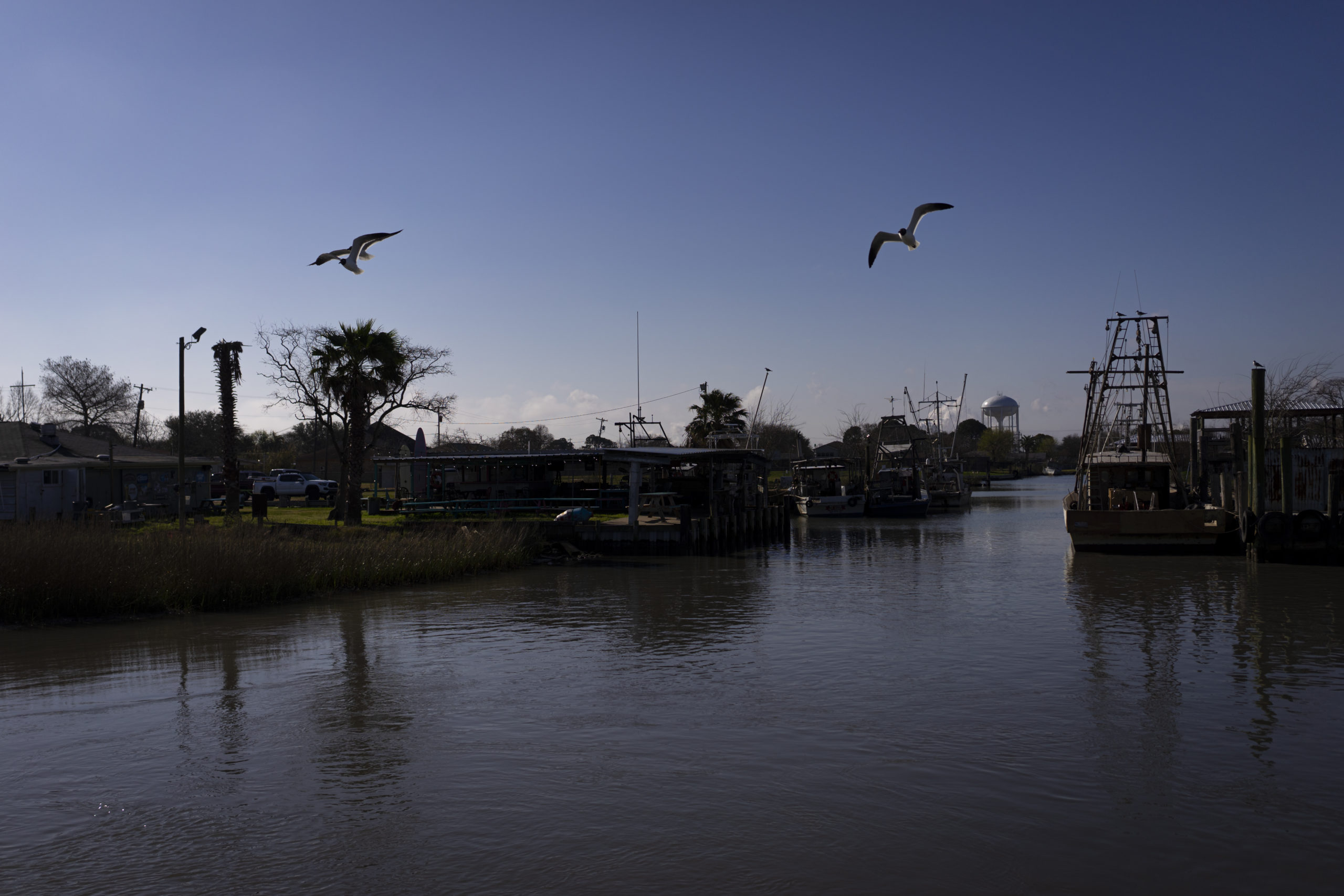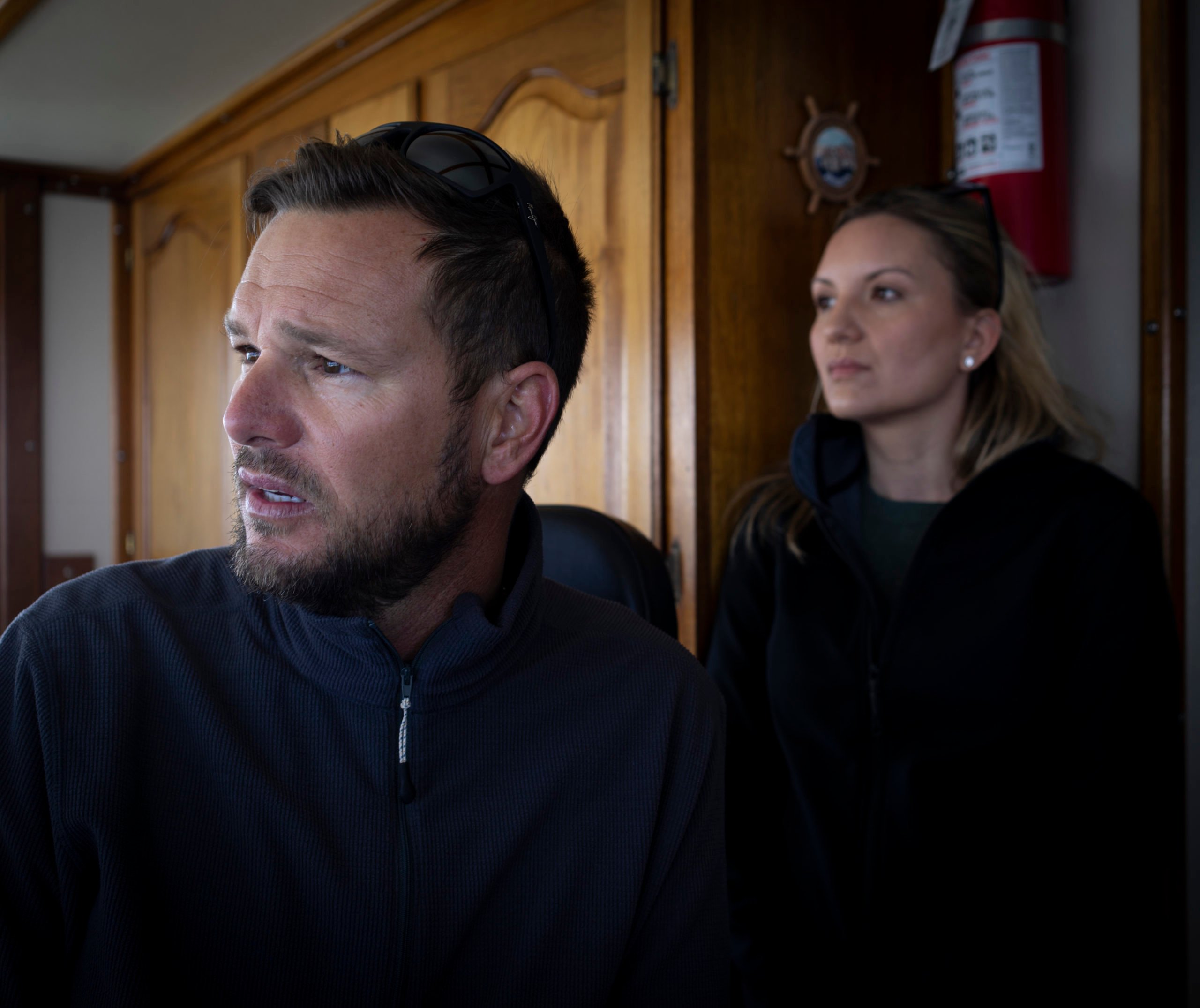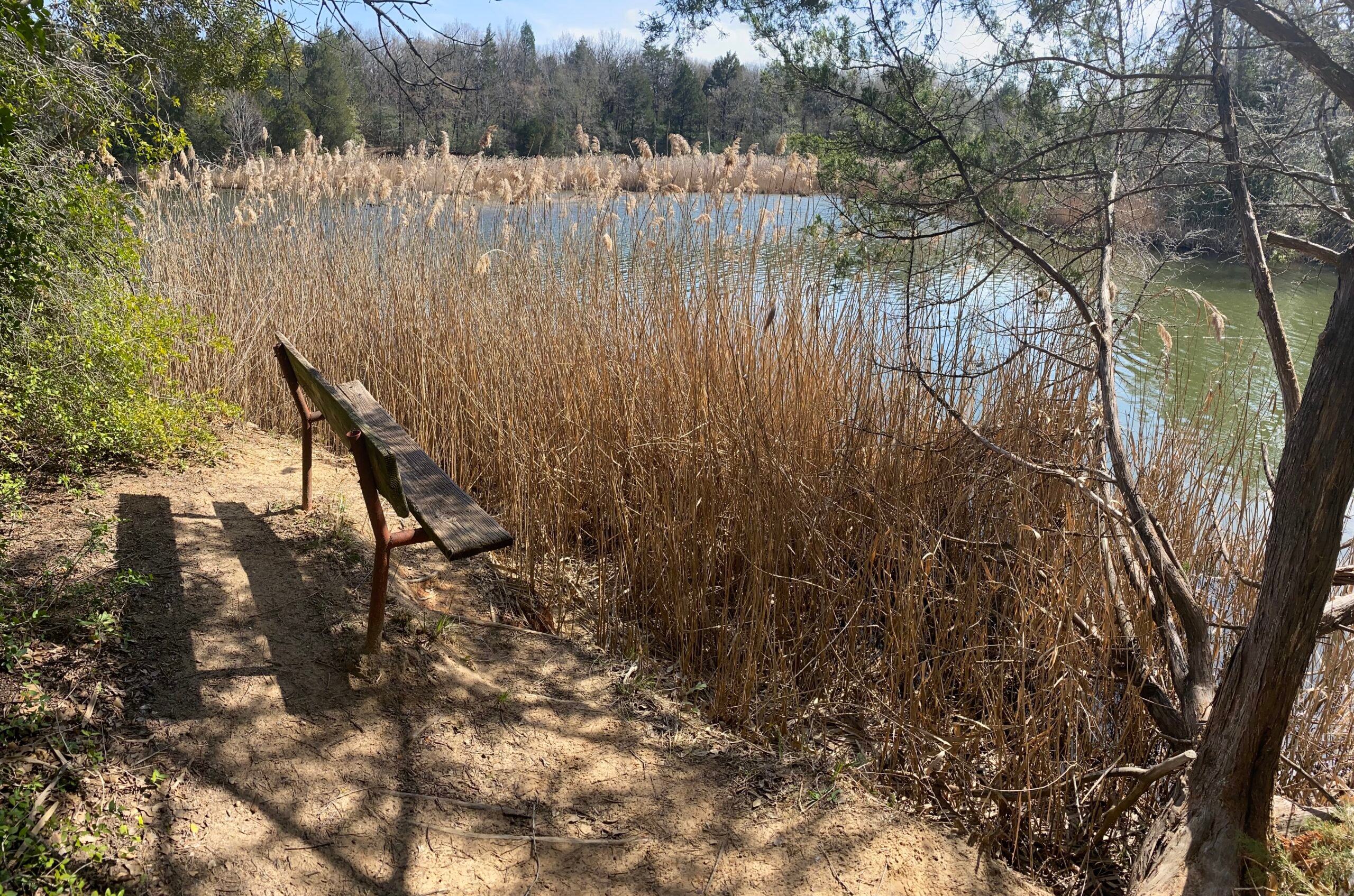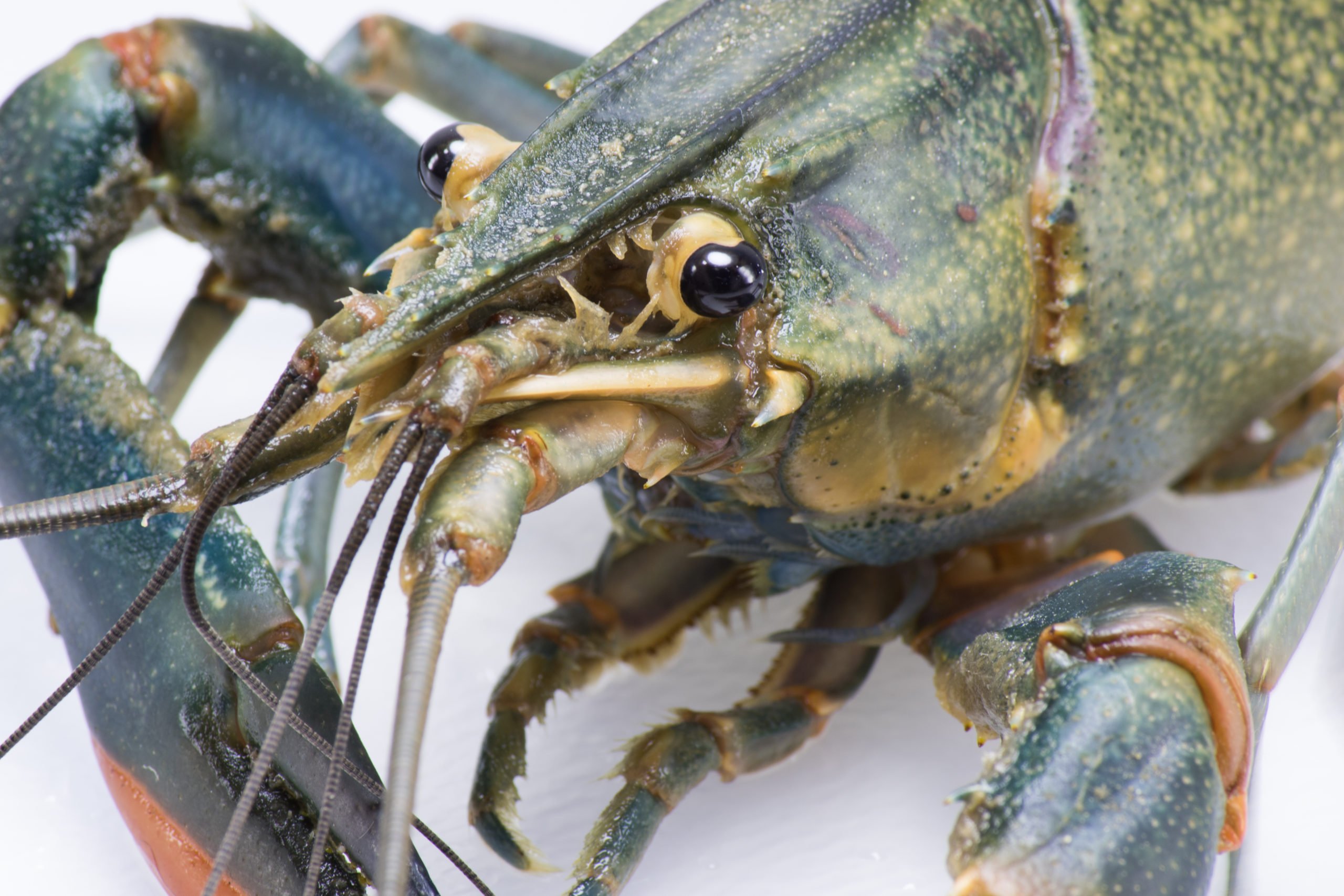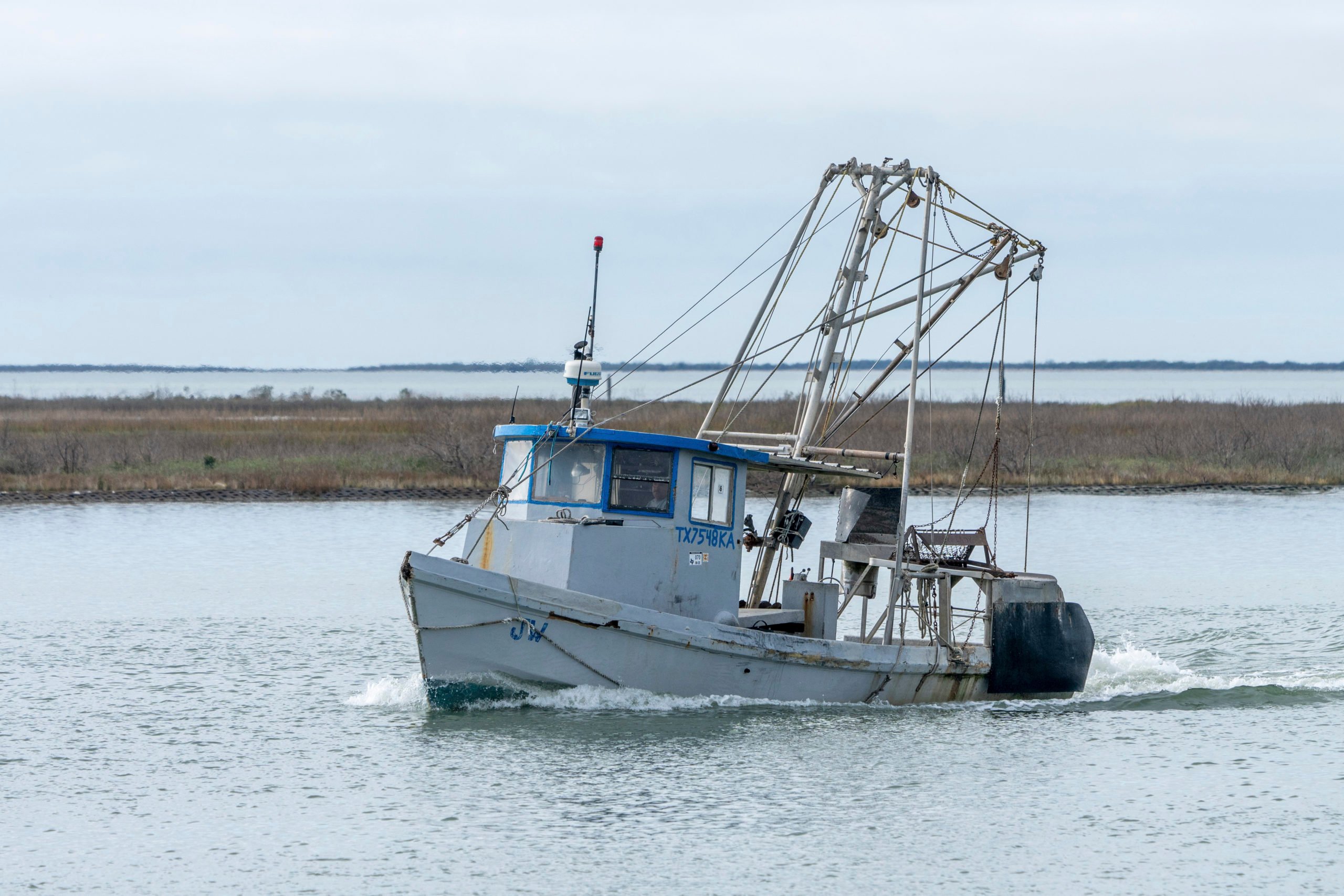People often ask if Frances and Johny Jurisich had an arranged marriage, the couple jokes. Both come from oyster fishing families that immigrated from the same small village in Croatia to Louisiana’s Gulf Coast, then west to Texas. In fact, Frances’ father, Misho Ivic, is Johny’s godfather, and the shucking house that Frances’ mother, Franka Ivic, founded in the unincorporated Galveston County area of San Leon is just 12 miles from the Jurisich dock in Texas City.
The couple started dating in high school. They married in 2004 and today have three children. On the Jurisich side, Johny is part of the fourth generation to go into oyster fishing. He hopes his 5-year-old son will carry the tradition into a fifth generation. Their 15-year-old daughter has a good head for business, Frances said, and may also go into oysters—but only if the business stays profitable.
It may well not.
Texas’ commercial oyster harvest season normally lasts from November through April. But by the end of January this year, the Texas Parks and Wildlife Department had closed 26 of the state’s 34 public oyster reefs to harvesters, citing declines in the number of larger, market-sized oysters turning up in routine monthly counts. The reefs that remain open are sparsely populated. Most of the state’s roughly 500 licensed oyster boats have already docked for the season.
The few oyster fishers still trying to eke out a harvest this year have clustered in small areas—like Ayres, Carlos, and Mesquite Bays near Rockport—putting pressure on oyster reefs that haven’t been fished much in the past. Out of concern for these previously untouched reefs, which serve as important nursery habitats for fish, Parks and Wildlife officials recently proposed closing them permanently to serve as wildlife sanctuaries.
“Are they just going to keep closing?” Frances asked. “Are they trying to push out the oyster industry?”
After decades-long declines in the state’s finfish, shrimp, and crab industries, Texas’ oyster fishers are among the last coastal fishers still standing. Wildlife regulations aren’t the only issue. There’s also the backdrop of a changing climate, making Texas bays less hospitable for oysters, as the state government stubbornly prioritizes fossil fuel exports at the expense of sensitive coastal industries like fishing.
“I think there may also be environmental justice concerns about which oystermen are most impacted by permanent closures,” said Jennifer Richards, a lawyer at Texas RioGrande Legal Aid. The people most likely to suffer economic losses from this latest Parks and Wildlife proposal, Richards explained, are lower-income, Hispanic fishers.
In the wild, baby oysters grow on top of their parents and grandparents, creating complex reef structures out of multigenerational layers of shells. The nooks and crannies in those reefs shelter small fish, crabs, and the young of many other marine species.
In Texas, people harvest oysters by towing a dredge—a large metal basket with teeth—alongside their boat over the tops of reefs. Scientists like Parks and Wildlife biologist Zach Olsen say that while oyster reefs can sustain some amount of dredging, too much can damage a reef’s structure, compromising its ability to harbor both baby oysters and other species.
Until recently, few oyster fishers went in the three bays under consideration for permanent closure: Ayres, Carlos, and Mesquite.
“Those areas have been, for all intents and purposes, protected areas,” Olsen said.
But this past year, fishing in these small bays has picked up, and Olsen thinks the area warrants formal protection now. It’s a unique habitat: The bays have oysters living in both shallow and deep waters, interspersed with seagrass and marshes, which provide an unusually diverse ecosystem for a host of plants and animals.
Commercial fishers say that they only began harvesting in this area because all their usual fishing grounds have been closed. They, too, want to see the oyster reefs grow and thrive—their livelihood depends on it.
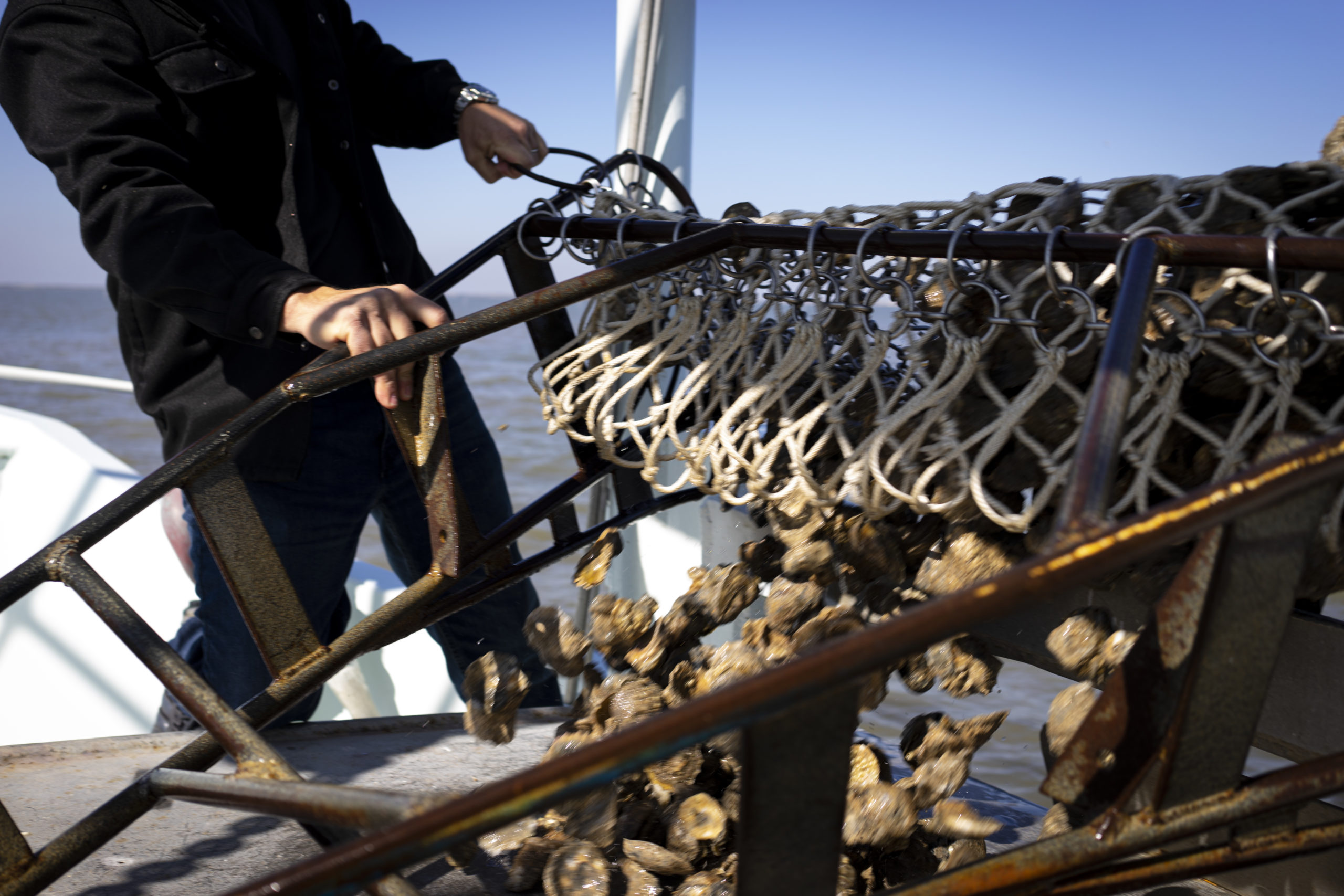
At a recent public hearing in Rockport, about 200 people packed into a large wooden beach pavilion. A good portion of attendees wore the unofficial uniform of the Gulf Coast sport fisher: outdoorsy button-down shirts, beige zip-off pants, practical black flip flops, and baseball caps. Commercial oyster fishers and their families, mostly speaking Spanish, clustered at the other side of the round room. At the front, a few Parks and Wildlife officials looked nervous as they prepared to explain the rationale for closing Ayres, Carlos, and Mesquite Bays and listen to public testimony.
Johny Jurisich and his father-in-law, Misho Ivic, both attended the hearing. Among his boisterous extended family, Johny seems like the quiet, shy one. But this year, he’s become an activist and a spokesperson for commercial oyster fishers. During his turn at the podium, he spoke passionately.
“No one loves the reefs more than oyster fishermen,” he said. “We have been pushed into this, and now we’re being made into the villains.”
Johny, Misho, and other commercial fishers say those who catch redfish, flounder, bass, and other finfish for sport in the same bays are unfairly attacking oyster fishers, when both groups should be on the same side. In November, the Coastal Conservation Association (CCA), a nonprofit organization composed of recreational and sport fishers, was among several fishing and environmental groups that signed a letter to the Parks and Wildlife Commission expressing concerns about oyster reefs in several Texas bays, including Carlos and Mesquite. CCA has wielded significant political influence over fisheries’ management since the 1970s. At least one commissioner is a CCA member and the association has given donations to the Parks and Wildlife Department in the past.
CCA did not respond to requests for an interview, but several CCA speakers at the Rockport hearing argued that increased commercial harvesting over the past several years has caused oyster reefs in the area to shrink, which can impact the wider ecosystem.
“We must give these reefs an opportunity to reach their full ecological potential,” said CCA employee John Braha during his public testimony.
The Parks and Wildlife Commission will vote on the proposal on March 24 in Austin. Members of the public can submit comments online before then.
The economic impact of oyster reef closures for families like the Jurisichs and Ivics, who own two of the biggest oyster fishing and buying operations in Texas, are huge. The Jurisich dock has more than a dozen boats, normally crewed by about 100 employees—half of them local, the other half guestworkers who come on H-2 visas each season from Mexico.
“We’ve had to send them all home,” Frances said.
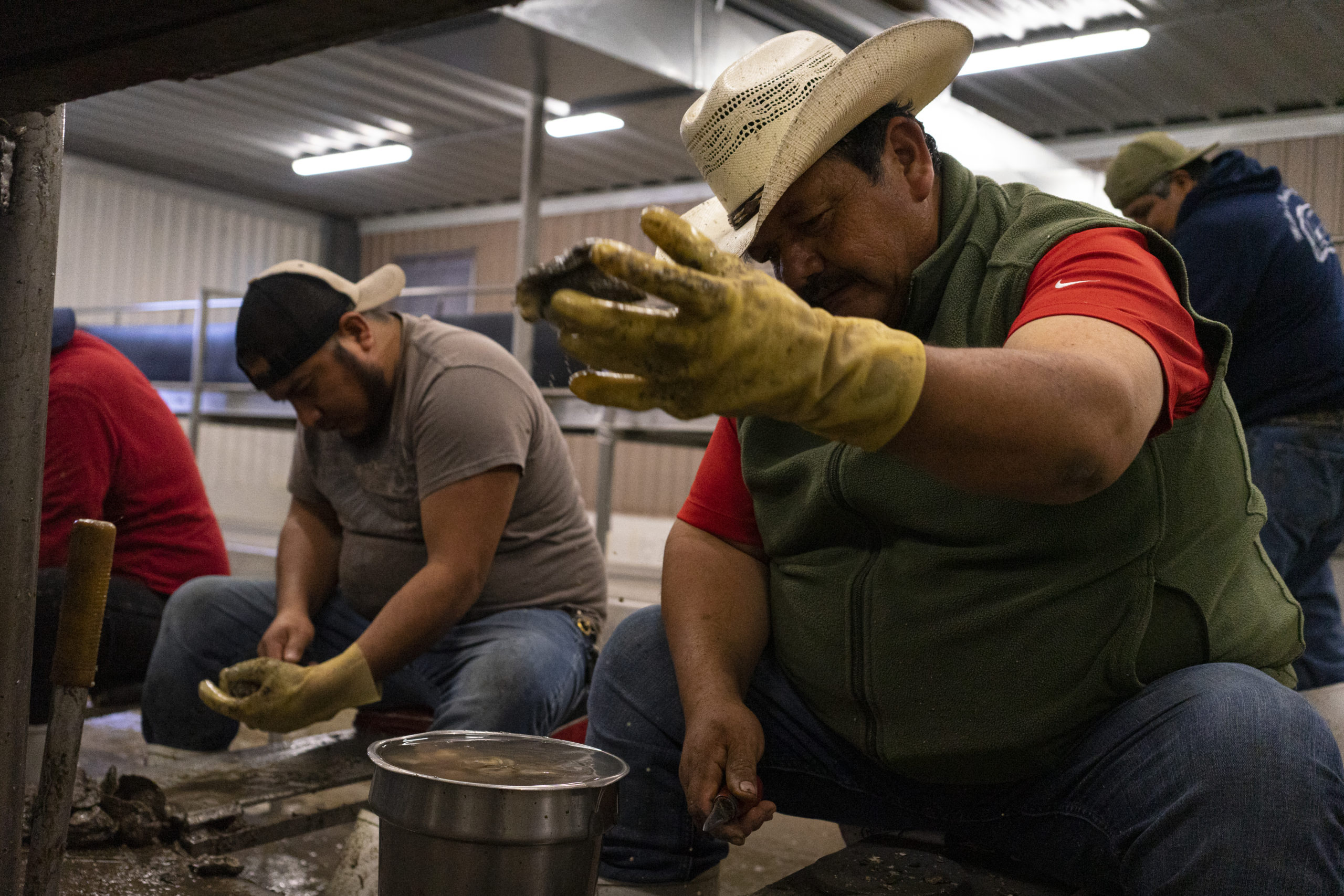
Johny’s brother, Tony Jurisich, who crunches the numbers for the family business, said that during 2021, their boats pulled in more than 26,000 sacks of oysters from the state’s public reefs. By the time the 2022 season ended in mid-January, they had pulled in fewer than 6,000.
The stakes are even higher for Texas’ small-scale, independent oyster producers, most of whom are second- or third-generation Hispanic fishers who own just one or two boats each and operate at the razor-thin edge of financial sustainability.
Jose Manuel Herrera, a 53-year-old commercial fisher from Port Lavaca, has been in the business for 30 years. He learned to harvest oysters from his father. Now, Jose Manuel is teaching his own son Hector, but this year’s reef closures have put them both out of work. Hector, 24, is looking for another job, but it’s a different story for his father.
“Who’s going to hire me at my age?” Jose Manuel asked.
His wife Dorothy is currently working double shifts cleaning office buildings to try to support the family, including relatives in Mexico they send money to. Things have been getting harder for several years, the Herreras said—ever since the Parks and Wildlife Department first started routinely closing bays in 2014, after some years of discussing the option. Since then, they’ve also limited the days of the week and the hours people can dredge, the number of sacks a boat can bring in each day, and the percentage of undersized oysters that are allowed to be in those sacks.
“Enough is enough,” Dorothy said. “It’s taken a toll. We’re trying to take it one day at a time, but it’s very, very hard.”
Scientists only really started to worry about these ecosystems in the past decade, said Jennifer Pollack, a marine biologist at the Harte Research Institute for Gulf of Mexico Studies, part of Texas A&M University in Corpus Christi. In 2008 and 2011, a pair of influential papers came out estimating that 85-90 percent of the world’s historic oyster reefs have been lost, mainly because of dredging by fishers.
The Gulf of Mexico is one of the last places on Earth with abundant, wild oysters. But here, too, oysters may be in trouble—though it’s unclear exactly how much of the recent declines in Texas are due to fishing and how much are due to changing environmental conditions.
Scientists and fishers agree that Texas’ current challenges date back to Hurricane Ike in 2008. Oysters are extremely sensitive to changes in water salinity and die off when the bays become too fresh or too salty. Storms and heavy rain send an influx of freshwater into coastal bays as well as sediment that can cover and suffocate entire reefs. As climate change continues, hurricanes and tropical storms are growing in intensity. Even setting aside these extreme weather events, Texas and many regions of the world are getting their rainfall in more concentrated bursts throughout the year, in between longer periods of drought.
For oysters, this increasingly boom-and-bust water cycle spells trouble. And when the environment becomes so challenging, harvesting by fishers becomes an added stress, according to Pollack.
“The oysters just kind of can’t catch a break,” Pollack said. “They’re doing okay, but then there’s a storm. Then they start doing okay, and then we start harvesting them. So it just takes a while for the resource to get its footing again.”
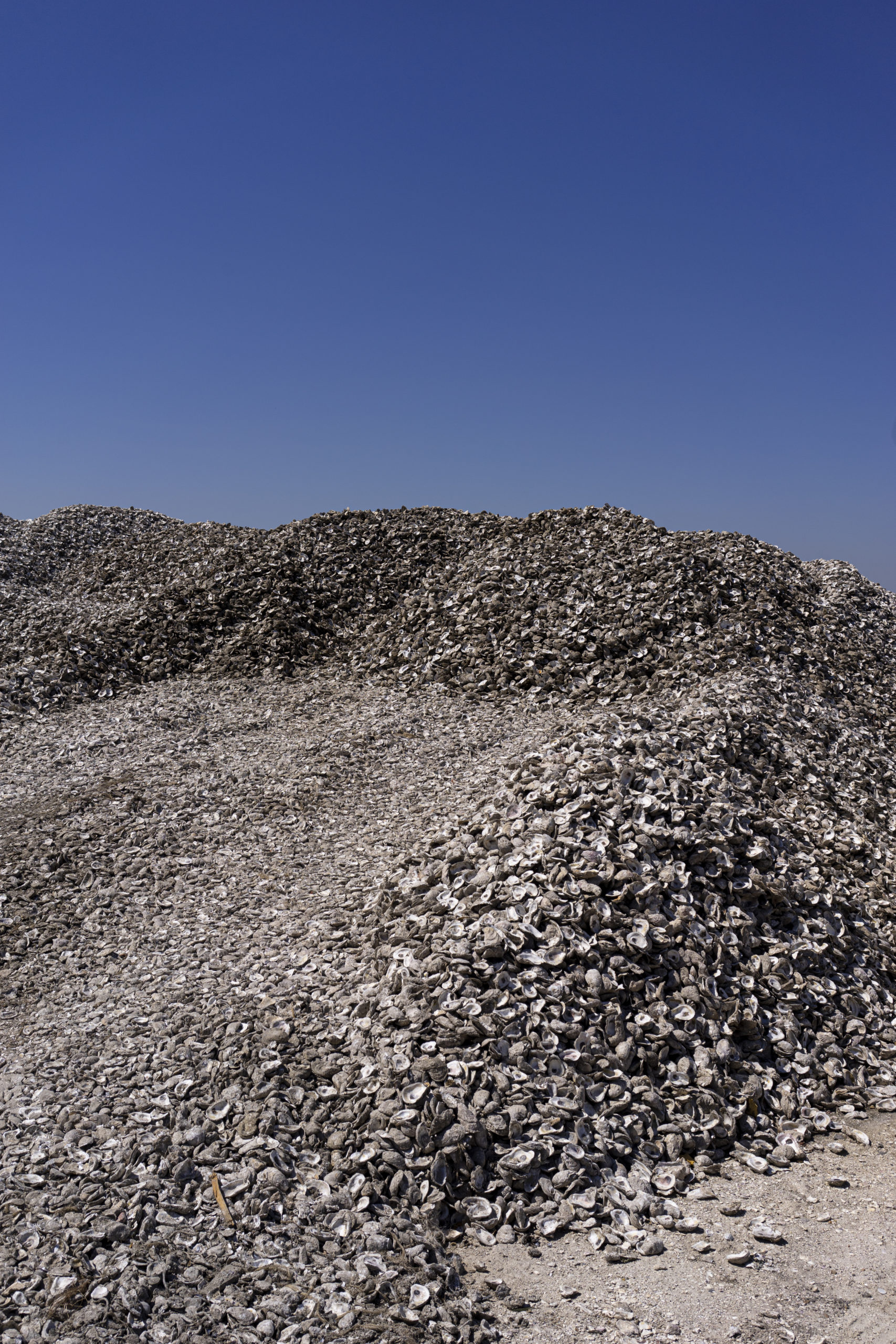
Hurricane Ike hit Galveston Bay—the historic hub of Texas’ oyster industry—particularly hard. When the oysters reefs in Galveston Bay, where the Jurisichs and Ivics run their businesses, were damaged, more fishers started to move south to areas like Port Lavaca, where the Herreras live.
In the wake of the hurricane, the Texas Parks and Wildlife Department began to regulate the oyster industry more seriously. The agency implemented a “traffic light system” that closes and reopens areas to harvesting based on monthly oyster counts, which the fishers blame for concentrating them in smaller and smaller fishing grounds like Ayres, Carlos, and Mesquite Bays.
In 2017, the state legislature passed House Bill 51, which was meant to be a compromise between the oyster industry, sport fishers, and the state. The bill required oyster fishers to return 30 percent of their empty shells to the water to help rebuild reefs or pay a tax toward restoration efforts. The Jurisichs and many other commercial fishers would rather be regulated by HB 51 than the traffic light system. But they oppose one contentious part of the bill that makes having too many undersized oysters an offense punishable by jail time.
On Tuesday, three more harvest areas in Galveston Bay closed temporarily based on the traffic light system’s routine oyster counts. Still pending is the proposed permanent closure of the three small bays outside Rockport.
Other options for sustainably managing the state’s oyster reefs do exist.
For example, in addition to harvesting on public reefs, the Jurisichs and Ivics lease some private oyster reefs, which they have exclusive rights to fish. Just about everyone—commercial oyster fishers, sport fishers, Parks and Wildlife officials, and independent researchers like Pollack—agree that reefs covered by these private leases are sustainably managed. Fewer boats harvest from each private lease, and the owners actively return empty shells and additional “culch” material, usually crushed up rocks, to the area for baby oysters to stick on.
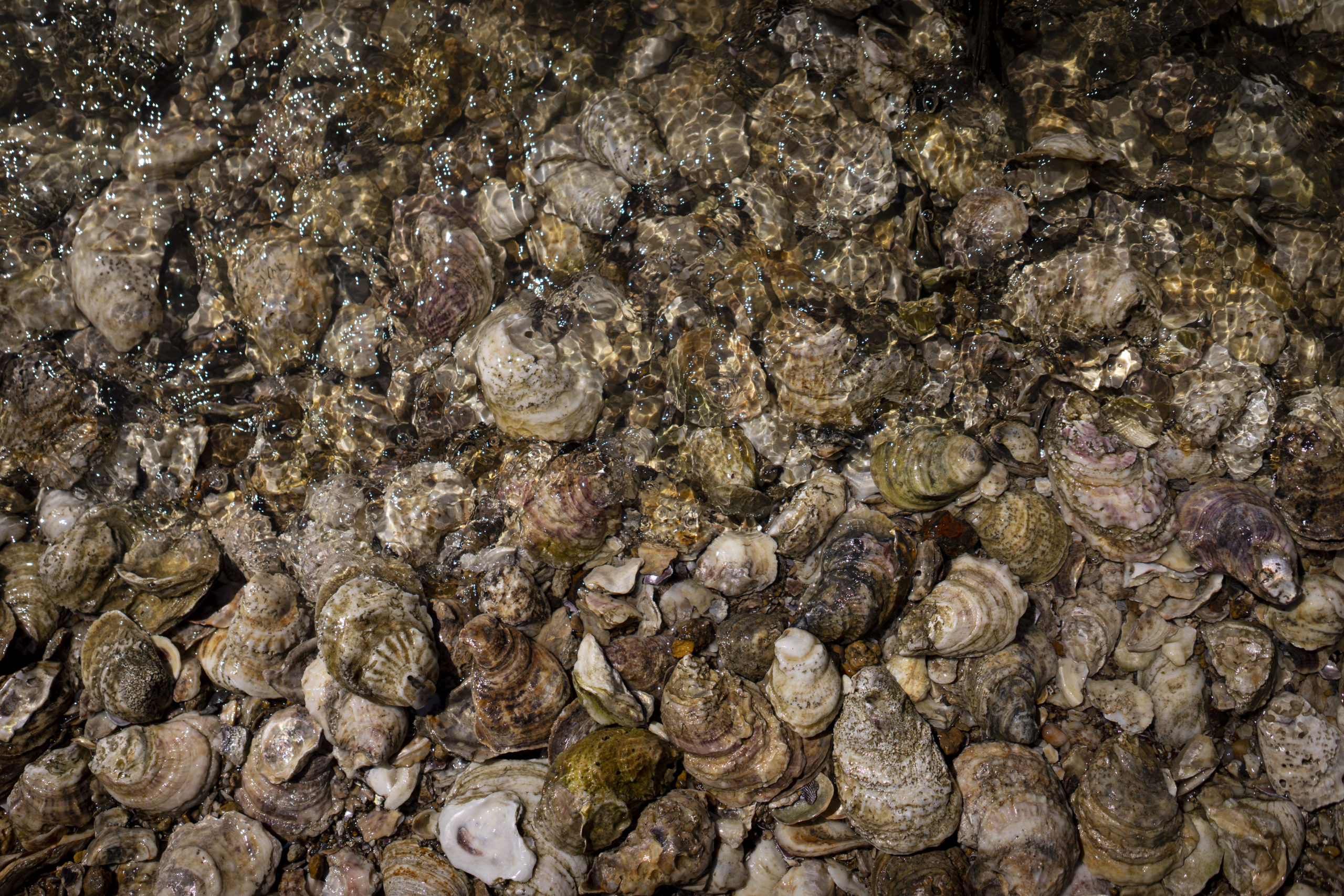
At the Rockport hearing, many of the people who support the proposed bay closures suggested that as an alternative, Texas should expand its private lease system, which hasn’t made any new areas available in decades.
The state, however, charges private leaseholders annual fees that may not be accessible to the majority of oyster fishers, who currently harvest from public reefs for free (aside from commercial fishing license fees). Exact rates for private leases vary, but the Jurisichs said they lease 144 acres for $21 per acre.
The fact that the few private leases that do exist are so successful underscores a fundamental disagreement between commercial fishers and most scientists. Olsen, Pollack, and others point to research showing that taller reefs that haven’t been dredged have more and bigger oysters, and also tend to be more resilient to changing salinity. On the other hand, oyster fishers say that dredging cleans reefs, clearing spaces for baby oysters to stick, and that the shells dredgers throw back as they circle oyster reefs actually widen the reefs.
There’s one thing all parties do agree on: After reefs have been dredged, or damaged by storms, returning empty shells or culch to the bays can make a big difference.
Pollack’s research group, for example, specializes in rebuilding and even creating new oyster reefs by returning empty shells to Texas bays. In early March, on a sunny Friday afternoon perfect for a field trip, graduate students and staff in Pollack’s lab set up an interactive lesson outside their building for a group of visiting sixth graders.
The researchers wore t-shirts emblazoned with “I <3 TX oysters.” (The heart was a line drawing of two strategically overlapping oysters.) A big bin of empty oyster shells, collected from area restaurants, sat in the grass next to a variety of biodegradable sacks and mysterious PVC tubes. The middle schoolers, along with their teacher, used the tubes to stuff the sacks with oyster shells. Once bagged, the shells would go back to the water, hopefully to provide habitat for a new generation of oysters.
“I think the goal should always be to make enough oyster habitat,” said biologist Gabriel Johnson, who runs a consulting company called MREC Environmental that works extensively with private leaseholders in both Texas and Louisiana (including the Jurisichs and Ivics). By regularly adding culch material to their reefs, leaseholders have achieved an equilibrium between the oysters they harvest each year and the habitat they maintain.
When it comes to sustainability, “the industry knows how to do it,” Frances said. “Because we have our own reefs, and our reefs are amazing.”
The problem is, outside of these private leases, public areas seem to be losing their equilibrium. Many more boats share the public areas, and the state doesn’t have the resources to return shells or apply culch to every single oyster reef that’s harvested.
Texas is only just starting to do oyster reef restoration on a larger scale, working with partners like CCA and the Harte Research Institute, as well as with funding from oil spill clean-up efforts. So far, though, the state’s efforts have focused on reefs that aren’t harvested much, anyway. Frances and Johny want to see restoration money going toward reefs that will benefit commercial fishers.
There are other management ideas in the water, too. The state legislature recently passed another bill allowing people to start growing and farming oysters in floating cages outside of natural reefs, the way the oyster industry in the Northeast now operates.
A pollution settlement by the plastics manufacturer Formosa is also funding a fledgling fishing cooperative for small-scale, independent fishers like the Herreras. Though the cooperative is open to all commercial fishers, most of the people joining lately are oyster fishers, said Diane Wilson, one of the organizers.
“The oystermen are fighting for their survival,” she said.
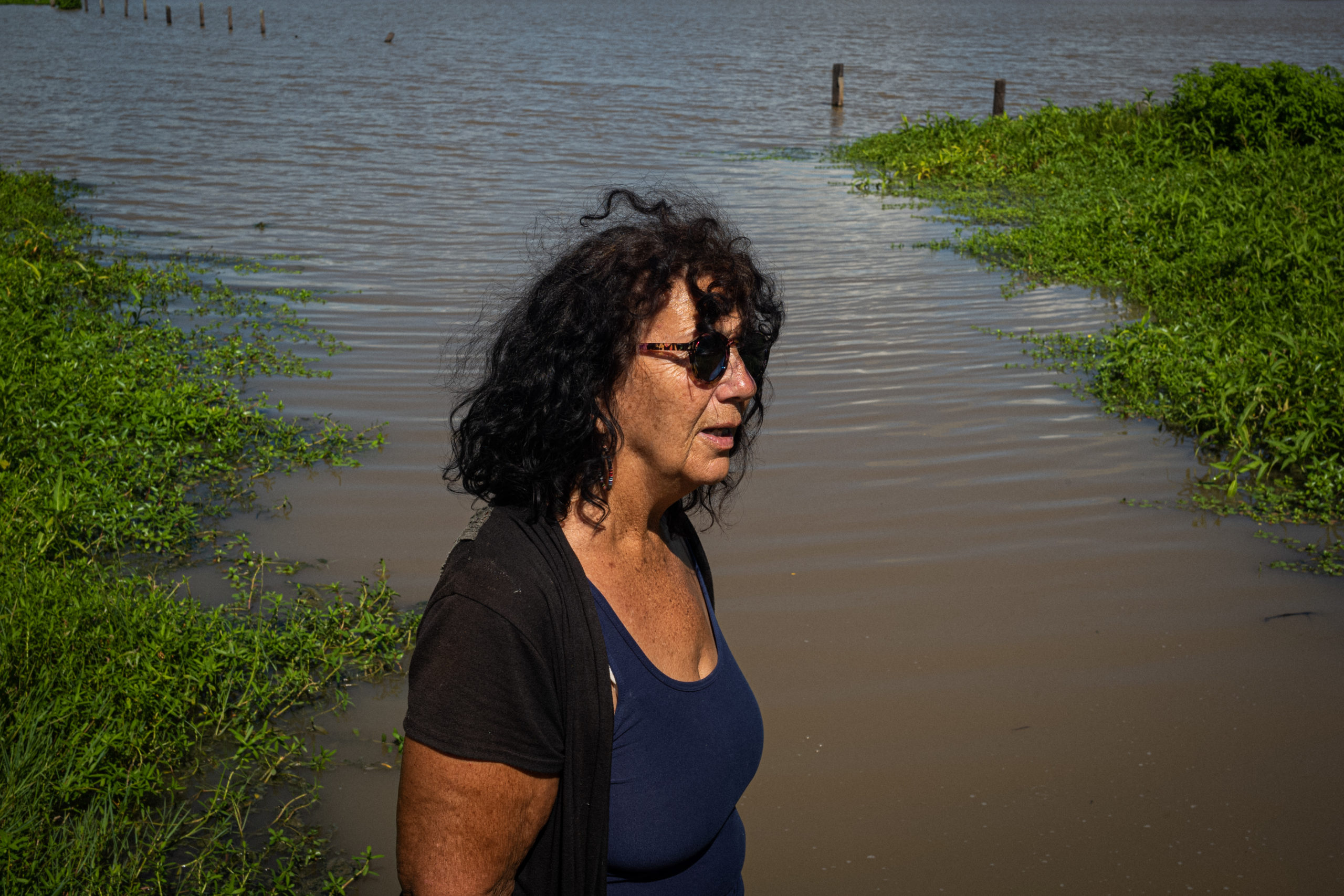
Around 200 people have traveled to Seadrift from all up and down the Texas coast for the past few monthly meetings. The group is uniting Texas’ commercial oyster fishers into a political force for perhaps the first time.
They just might succeed. On March 8, Seadrift’s city council passed a resolution asking the Texas Parks and Wildlife Department to prepare an economic impact study for the proposed closure of Ayres, Carlos, and Mesquite Bays: something that might have seemed like a no-brainer in a state that fights tooth and nail to protect oil and gas jobs from environmental regulation. The city council also encouraged the agency to instead consider replenishing these reefs with empty shells as part of a restoration project.
Increasingly powerful storms like Hurricanes Ike and Harvey haven’t just destroyed oyster reefs. In 2017, Hurricane Harvey also sank one of the Herreras’ boats. Despite losing such a substantial investment and vital source of income, the couple didn’t lose hope.
“We’ve been through a lot these 30 years in the industry,” Dorothy said. “But our faith is what has pulled us through.”
As it turned out, the Herreras had reason to believe. The Port Lavaca community rallied around the family, and Texas Sea Grant officials arranged for a crane to pull the boat back to the surface. After being underwater for 22 days, amazingly, the boat came up fully intact. And after Jose Manuel cleaned the motor, the thing still cranked up and worked.
Just as they put their faith in God after the disaster of Hurricane Harvey, Dorothy and her husband are putting their faith in God now to change the minds of Parks and Wildlife officials—to reopen the bays to harvesting and pull the oyster industry through these lean times.
“We’re very optimistic,” she said. “We have hope.”
